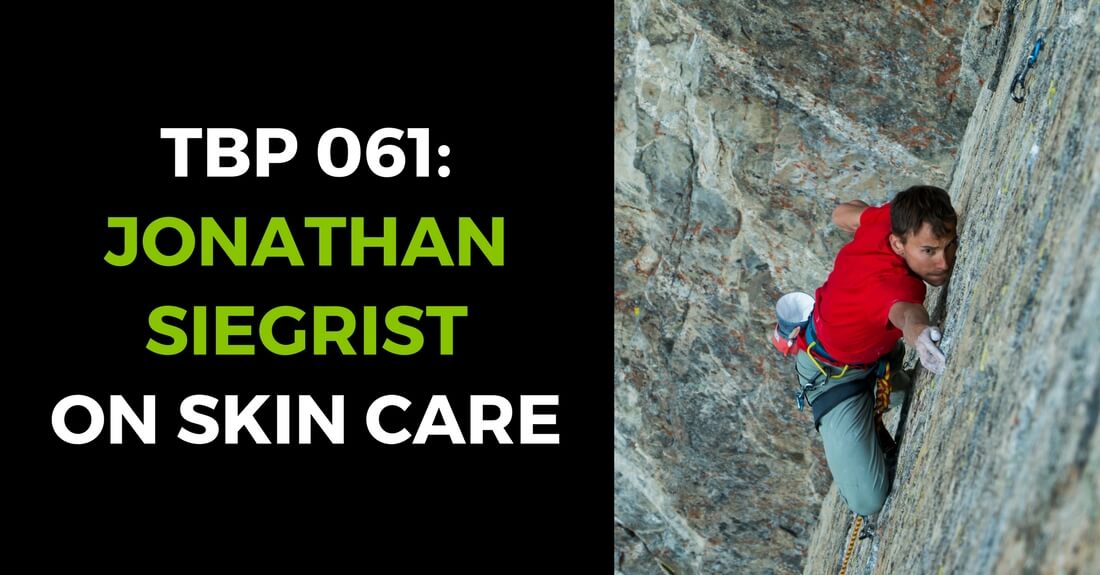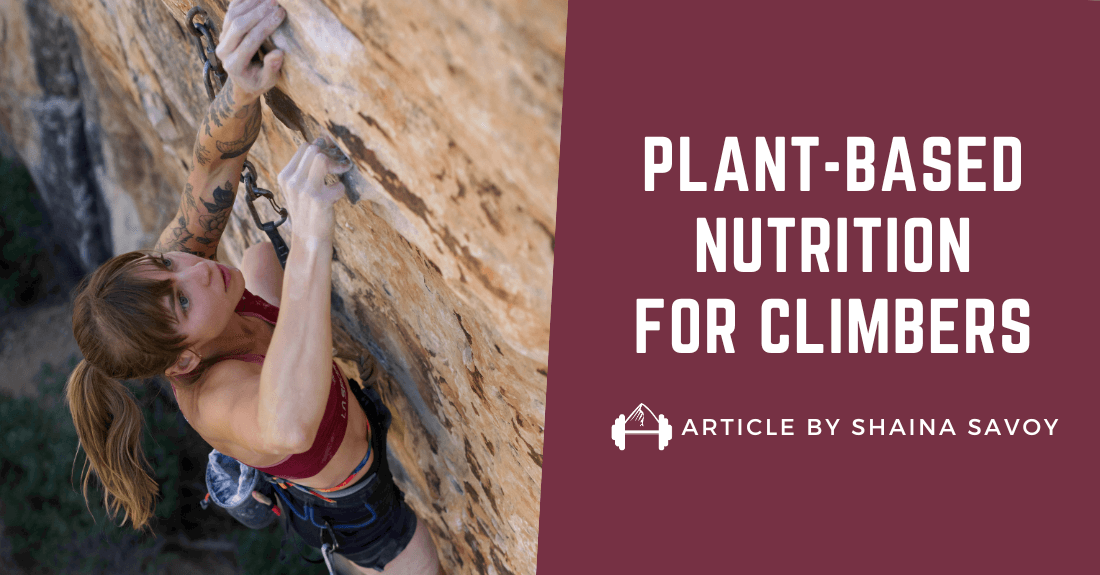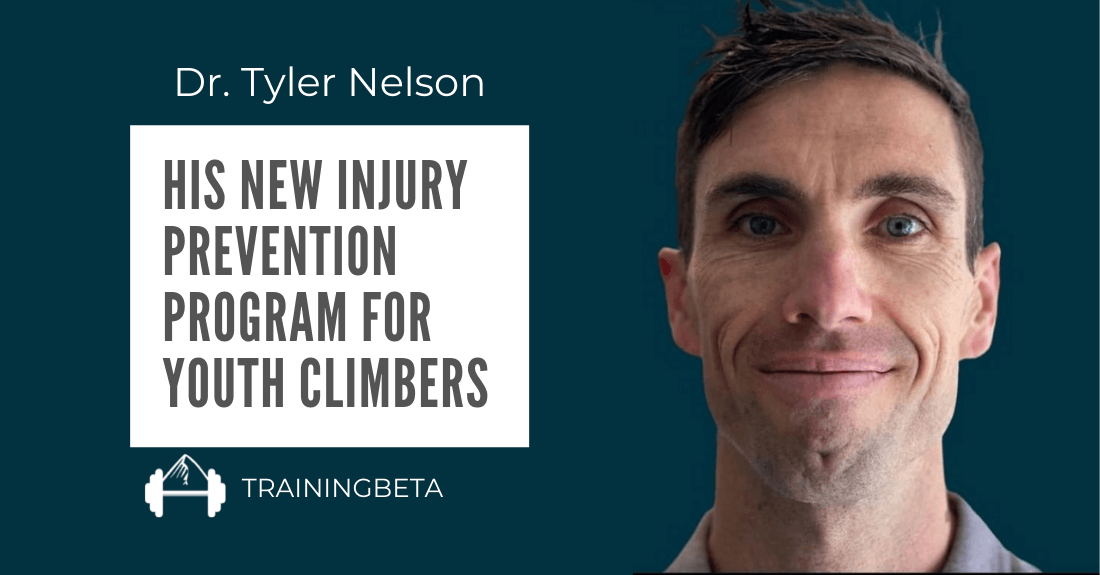Today we are going to try something a little different. Here at TrainingBeta, we’ve been talking about how the podcasts are full of so much valuable information from some of the top climbers, trainers, and coaches out there.
We know that it can be hard to find the time to sift through all the episodes and listen to hours and hours of podcasts. Luckily, we also have transcripts for lots of our episodes and are working on getting more episodes transcribed everyday.
What we thought we’d do is start pulling out what we felt are particularly informative sections from the interviews on a particular topic so that they are a little more digestible.
To kick it off, here’s the text from the second Jonathan Siegrist episode where he talks to Neely about his skin care tactics. Give it a read or skip to the full transcript by clicking the link at the bottom of the page if you are looking for more!
Jonathan Siegrist on Skin Care:
Neely Quinn: So, can we talk about skin for a little bit? You’re super meticulous about your finger skin, your hand skin, and we actually get a lot of emails from people like, “How can I take care of my skin? What do you do?” Can you give me an overview of how you take care of your skin and when you know it’s time to stop climbing because of it?
Jonathan Siegrist: Yeah, totally. It’s a lot to talk about in an hour-long podcast, but I would say primarily that I don’t get my skin – I don’t wash dishes with dish soap. I use gloves to wash dishes. I’m not so freaky that I put on gloves when I wash my hair in the shower or anything like that, but I just try and limit the exposure to warm, soapy water as much as I can with my skin.
Neely Quinn: Why is that?
Jonathan Siegrist: It just softens your skin, in general. I think that you want hard skin for the most part. It can actually dry out your skin really badly. I know of some people – I have, actually, really dry skin in general and in the winter I have issues with cracking. A lot of times, if I’m climbing in a desert environment, like in Las Vegas or something, and it’s windy and the humidity is below 20%, I can’t climb. My skin is so dry and slick that I can’t get up the wall.
Neely Quinn: I know. That was the weirdest thing. I was belaying you on Jumbo Love and you were falling off because your fingers were too dry. You would come off and scream, “My fingers are so dry!”
Jonathan Siegrist: [laughs] I know. It’s a problem that very few climbers have, and you know, so many people when I tell them that are like, “I’m so jealous. I’m endlessly jealous of you,” and the reality of it is it’s just an issue just as much as sweating a lot. You just have to kind of pick your environments and take care of your skin in a different way.
I mean, I know friends – and Joel Love is a good friend, for instance, and he’s a great climber and he sweats like a banshee. He can’t stop his fingers from sweating. He would never really dream of putting a moisturizer or something like that on his skin at night, but for me, before I go to bed every night, I put Climb On! on my skin. Then a lot of times, for me, I think I actually perform better in humid climates. When it’s 80% humidity and hot, no one is going to do well. I don’t care how dry your skin is. For me, definitely near 50% humidity and cool can be great, for me, and I think for a lot of climbers that can be death.
Neely Quinn: And you file your skin, too.
Jonathan Siegrist: Yeah, definitely. I try and take – the point behind filing your skin is just to basically, whenever one portion of your fingertip skin gets hard and callused, and other portions are soft, whenever you have that contrast of hard and soft skin next to each other it makes it much easier for it to rip, basically, in those areas. If you have a really hard callused area, especially on the pads of your hands or on – not on your fingertips, but on – the second and third digit, or the second and third pad, rather, that’s how you get a flapper, basically. It’s when you have that really hard skin next to soft skin, so I try and file my skin pretty much every day.
Neely Quinn: File it so it’s more even.
Jonathan Siegrist: Yeah, so it’s more even throughout.
Neely Quinn: Anything else? Like, what do you do – you have a particular method when you do get a split.
Jonathan Siegrist: Yeah. My fingers split a lot, and I think part of reason is because I do have dry skin. When it’s cold and the climbing conditions are good, it can be really hard on your skin. Secondly, I have – I know the people listening can’t see this, but – my first joint bends back quite a bit. If I’m in a closed-hand crimp, especially on my pointer finger, that finger bends backward quite a bit and I think the result of that is stretching the skin. Basically, it bends back more than normal people, I would say. I think the result of that is that the crease, the first crease in especially my pointer finger, tends to rupture quite a bit. Definitely in dry, cold temps.
One thing that I actually learned from Robyn Erbesfield, and I kid you not, this is some of the best finger skin healing information that I’ve ever received from anyone, is that when you do get splits like that, in either your fingertip or in the crease, at night – and again, I’m such a freak that when I lower off of routes sometimes I’ll do this immediately after, even still at the crag with chalk on my hands – I actually tape my finger. I use a q-tip or any hard, little piece of wood or something, or I’ll take apart clothespins and I’ll use one side of the clothes pin, but I basically tape the clothespin to the back of my finger so that it’s taped in an open position, so my finger is taped in such a way that it would look like I’m always pointing.
The point of that is that overnight and otherwise when your skin is healing, it’s healing in the open position so that in the morning, when you go and start climbing again, it tends not to rip open. If you can imagine your hand being balled-up into a fist, like when you’re sleeping or when you’re just hanging out watching a movie or whatever, which is pretty much the natural position of the hand, the skin is going to grow in a closed position. Then, when you outstretch your finger again the next day or the following day or whatever to crimp – well, especially to crimp, but really to grab anything – it’s just stretching that skin way back open again. I think if it can heal in an open position, it gives it/much less elasticity is required of the skin to refrain from rupturing.
Neely Quinn: Right.
Jonathan Siegrist: It’s helped me to a degree that I can’t really describe to you guys. Like, doing that – I used to get splits/I used to, basically, just have splits on my pointer fingers starting in November until March of every year, of every climbing season. Now, I don’t deal with splits at all, or if I do, it’s something that lasts a week instead of a month.
Neely Quinn: Do you put anything on it?
Jonathan Siegrist: I do. I put Climb On! on it, and Polly Glasse is the founder and inventor and she’s awesome and knows so much about skin. I’ve actually interviewed her a bunch, out of total desperation when I’m out at the cliff and my skin’s messed up. I think I’ve sent her emails from the cliff. She’s helped me a lot to figure out the best ways to heal skin and what she says more than anything, and I’m sure tons of people have comments otherwise, but what she’s told me and what’s been helpful for me is to keep the wound actually wet and moist all the time. I keep, if I have any open wounds on my hands that I’m trying to heal, I keep it pretty well lathered up with Climb On! constantly.
Neely Quinn: Okay. Anything else about hands or skin?
Jonathan Siegrist: No. Just take care of them. They’re really important. [laughs] You know? Skin is good. I don’t know. It doesn’t matter how strong you are, if you have tears on every finger, you’re not going to send. Well, if you’re Alex Megos you probably will. Every picture I ever see of that guy, he has tape on every finger. I’m like, “Dude! How did you do it?”
Full Transcript: TBP 061 :: Jonathan Siegrist’s Minimal Training Regime and Meticulous Skin Care
(photo courtesy of Matt Pincus | @mpincus87)





Leave A Comment